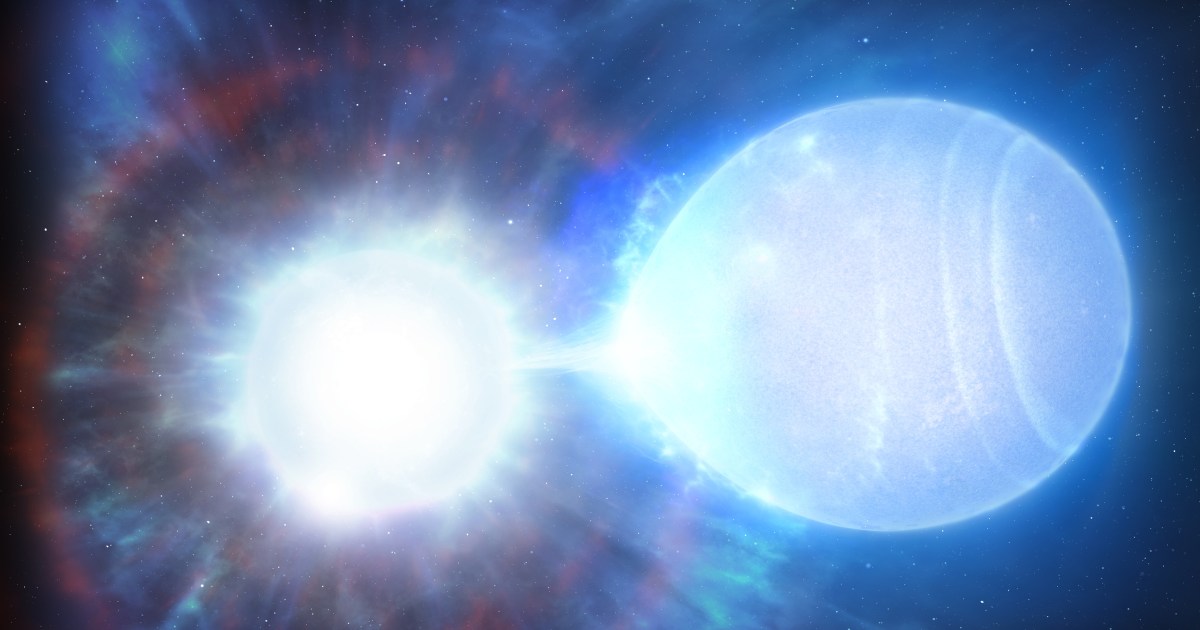
A dramatic cosmic event is winding up to occur right in our backyard. Astronomers have spotted a pair of stars bound for collision, located just 150 light-years away. When the pair impact, they will create a supernova explosion that will be 10 times brighter than the moon.
The pair are part of a rare class of objects called high mass compact binary star systems. While it isn’t unusual for stars to appear in pairs called binaries, rotating around each other, it is unusual to see two such massive objects heading for a collision.
“For years a local and massive double white dwarf binary has been anticipated, so when I first spotted this system with a very high total mass on our Galactic doorstep, I was immediately excited,” said lead researcher James Munday of the University of Warwick, UK. “With an international team of astronomers, four based at The University of Warwick, we immediately chased this system on some of the biggest optical telescopes in the world to determine exactly how compact it is.”
When Munday and colleagues observed the pair, they saw that they were extremely close together, at just one sixtieth of the distance between the Earth and the sun. The pair is heavy too, with a combined mass that it 1.56 times the mass of the sun. That means the pair will inevitably collide soon, and create a type of supernova called a 1a — though this wont happen for another 23 billion years.
The pair are currently orbiting each other in an orbit of 14 hours, but they will move closer and closer over time until they are completing an orbit in less than a minute, before crashing together.
“This is very significant discovery,” said fellow researcher Ingrid Pelisoli of The University of Warwick. “Finding such a system on our galactic doorstep is an indication that they must be relatively common, otherwise we would have needed to look much further away, searching a larger volume of our galaxy, to encounter them.
“Finding this system is not the end of the story though, our survey searching for type 1a supernova progenitors is still ongoing and we expect more exciting discoveries in the future. Little by little we are getting closer to solving the mystery of the origin of type 1a explosions.”
The research is published in the journal Nature Astronomy.
Services Marketplace – Listings, Bookings & Reviews
